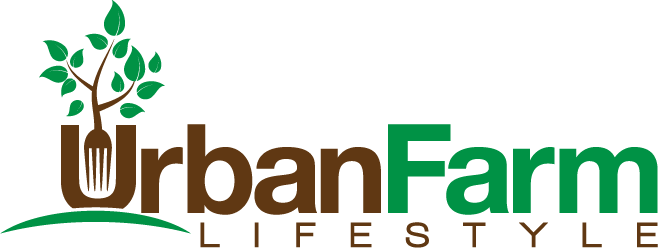Healthy-Sustainable-Regenerative Lifestyle
Spring Blossoms
One of the most anticipated times around Washington D.C. is the cherry blossom trees blooming in the spring. When you see blooms, think pollinators.
David Proctor
We may not live on a farm, but we can grow where we live.
Blossoms & Pollinators
by David Proctor
March 12, 2020
Urban Farm Lifestyle Magazine Published Weekly
We have changed our clocks forward an hour, the weather is getting warmer and the cherry blossoms are coming into bloom. March 19th is the first day of spring.
What does all this mean? It is time to get ready for our outdoor growing season!
One thing that we take for granted when we see our flowers and trees bloom, is the pollinators that are required for our plants and our survival.
Without our pollinators, we would not have the beautiful flowers that produce the fruits and vegetables that we need for our survival.

Washington D.C. Cherry Blossoms
We can help our pollinators by planting plants and trees that occur naturally in our region so that the pollinators will have the food that they need to eat.
We can also help our pollinators immensely by limiting the herbicides and pesticides that are applied to our lawns and gardens.
When a bee flies across a green lawn that may look great to us, the bee sees a green desert with nothing for nourishment.
We love to look at the cherry blossoms, the apple trees and other fruit trees that are coming into bloom.
As pleasing as the blooms are, I would take a cherry or apple pie any day over just having blooms with no fruit to consume.
There are many pollinators that need a hand nowadays but I would like to point out the mason bee that is going strong.
I did an interview with Dave Hunter, owner of Crown Bees, if you would like to read again, I will provide the link here for Part 1 Mason Bees and Part 2 Mason Bees.

I enjoy reading his newsletter which has very good information on starting your own mason bees.
The mason bee is considered a super pollinator. Even though it can easily out pollinate a honey bee, the mason bee does not produce honey. Here are some excerpts from this month’s newsletter:
“Release Mason Bee Cocoons
Releasing cocoons simply means placing cocoons into the bee house.
Adult bees will emerge from their cocoons and find a nesting hole to claim on their own, no need to place cocoons into the nesting holes. You can release cocoons once the bee house is installed, the nesting holes are placed, your flowers are blooming, and the temperature is right.
Mason bees hibernate as fully formed adult bees inside of their fuzzy cocoons. Mason bees begin to emerge from their cocoons around 50F/10C and it can take some time for all of the bees to emerge from their cocoons.
Release mason bee cocoons when you have open blossoms and consistent daytime temps of 55F/13C or warmer. Freezing nighttime temperatures do not affect the bees.
Pro Tip: Dandelions begin to bloom = time to release mason bee cocoons.
- To increase the number of nesting female bees, first apply InvitaBee Plus+ pheromone attractant to the front of your nesting holes.
- Place cocoons on top of your nesting holes and towards the back. Keep cocoons out of direct sun.
- The mason bees’ small shipping box or a small paper cup can protect cocoons on windy days.
Pro Tip: Extend your bee season by releasing half your cocoons, then waiting a few weeks to release the second half. You can store mason bee cocoons in your fridge while you wait.
- Release a variety of cocoon sizes. Larger cocoons are female bees, smaller cocoons are male bees. The natural ratio for mason bees is 3 males to 2 females.
- Depending on the weather, it can take up to three weeks for mason bees to emerge.
- Make sure all your mason bee cocoons are released by mid-May.
If spring arrives late: If your blooms are not yet open, you can keep the emerged adult bees in the fridge and feed them with a cotton ball soaked in a 1 part water to 1 part white sugar solution.
Clayey Mud is Vital: Mason bees will not nest if they can’t find moist clayey mud nearby. Test your soil for clayey mud by digging a small hole near the bee house. When wet, it should stick together and behave like play-dough. Add Spring Mason Bee Mud Mix if it feels gritty or does not stick together.
- For fast draining soil and arid locations, use our Spring Mason Bee Mud Box.”

Enjoy!
Check It Out!
WSDA Alert: Houdini Fly Sneaks Into Mason Bee Nests
The WSDA warns of an invasive parasitic fly species spreading in North America, read their blog here. Known in Europe as the Houdini fly, this fruit fly relative threatens the mason bee industry. We’ve been working with the WSDA to raise awareness of the Houdini fly to nurseries and gardeners across Washington State. Click the button below to learn how to protect your mason bees against this new pest.
Quick Tip
SPRING MASON BEE CHECKLIST:
- Late Spring Arrival: Check & add water if HumidiBee feels dry.
- Feed Early Emerged Bees: Cotton ball in sugar mix, change daily.
- Attract Nesting Bees: Add InvitaBee Plus+ to smell like home.
- Read 3 Ways to Make Mud for Mason Bees.
Bibliography:
CrownBees; Bee Mail News Letter March 2020



Recent Comments